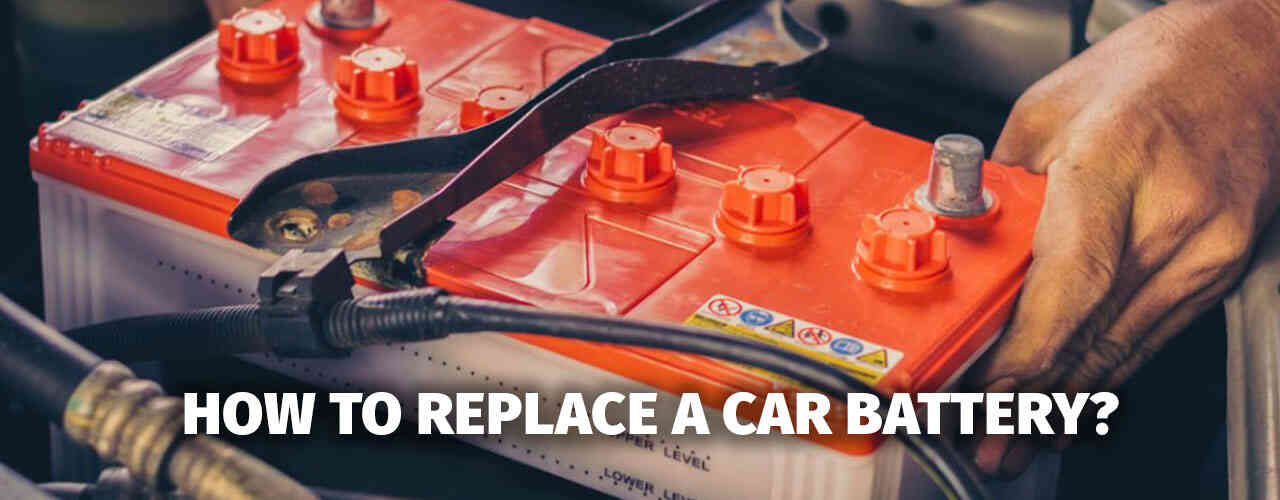If you find yourself in need of replacing the battery in your vehicle, fear not! This comprehensive guide will walk you through the process, ensuring you have a clear understanding of each step. By following these instructions, you'll be able to successfully replace your car's battery without any hassle.
Gather the Necessary Tools
Before diving into the replacement process, make sure you have all the required tools on hand. This will save you time and frustration. You will need:
- A pair of safety goggles
- Protective gloves
- A wrench or socket set
- Battery cleaning solution
- A wire brush
- A new automotive battery (make sure it matches the specifications of your current battery)
Safety First: Prioritize your safety by putting on the safety goggles and protective gloves. Dealing with a car battery involves handling potentially hazardous materials, so taking precautionary measures is crucial.
Locate the Battery: The battery is typically located in the engine compartment of your vehicle. Consult your car's owner manual if you're unsure about its exact position. Once you've located the battery, visually inspect it to ensure there are no leaks or damages.
Disconnect the Battery: Using the appropriate wrench or socket, carefully loosen and remove the negative (black) battery cable first. Be cautious not to touch any metal surfaces with the wrench to prevent electrical shock. Once the negative cable is disconnected, proceed to do the same with the positive (red) battery cable.
Remove the Old Battery: After disconnecting both cables, carefully lift the old battery out of its tray or mounting bracket. Batteries can be heavy, so use proper lifting techniques to avoid strain or injury.
Clean the Battery Terminals: Before installing the new battery, it's essential to clean the battery terminals. Mix a solution of battery cleaning solution and water as per the manufacturer's instructions. Dip the wire brush into the solution and scrub the terminals to remove any corrosion or buildup.
Install the New Battery: Take the new battery and place it in the tray or mounting bracket, ensuring it sits securely. Connect the positive (red) battery cable to the positive terminal of the new battery, followed by the negative (black) cable to the negative terminal. Tighten the cables with the wrench or socket to ensure a snug fit.
Test the Battery: Once the new battery is securely installed, turn on your vehicle and check if it starts smoothly. If everything functions properly, you have successfully replaced your car's battery.
Dispose of the Old Battery: Properly dispose of the old battery at a designated recycling center or return it to an automotive store that accepts used batteries. It's essential to handle and dispose of old batteries responsibly due to their environmental impact.
Remember, if you encounter any difficulties during the battery replacement process or are unsure about any step, it's best to consult a professional mechanic for assistance.
In conclusion, replacing a
car battery can seem daunting, but by following this step-by-step guide, you can tackle the task with confidence. Prioritize safety, gather the necessary tools, and carefully follow each instruction. With patience and attention to detail, you'll successfully replace your car's battery and ensure your vehicle continues to run smoothly.
Responsible Disposal of Car Batteries
Used car batteries should be disposed of properly at designated recycling facilities or battery recycling centers. Improper disposal of car batteries can have harmful environmental effects due to the toxic chemicals they contain. Here are a few options for disposing of car batteries responsibly:
Local recycling centers: Check with your local recycling center or waste management facility to see if they accept car batteries for recycling. Many municipalities have specific drop-off points or collection programs for used batteries.
Auto parts stores: Some auto parts stores offer battery recycling services. Contact nearby stores or inquire if they accept used car batteries for recycling.
Battery retailers: Battery retailers or manufacturers often have take-back programs where they accept used batteries for recycling. Contact them to inquire about their recycling services.
Authorized service centers: Certain authorized service centers or car dealerships may accept used batteries for proper disposal. Call ahead and confirm if they have a battery recycling program.
It's important to never dispose of car batteries in regular household waste bins or throw them in the trash. By recycling car batteries, you contribute to protecting the environment and preventing hazardous materials from ending up in landfills.
How to Replace a Car Battery FAQs
How do I know if my automotive battery needs replacement?
Signs of a failing battery include difficulty starting the car, dim headlights, and a sluggish electrical system.
What tools do I need to replace an automotive battery?
You'll need safety goggles, gloves, an adjustable wrench, battery cleaning solution, a wire brush, and a new battery that matches your vehicle's specifications.
How do I replace a car battery?
Disconnect the negative cable, then the positive cable, remove the old battery, clean the terminals, install the new battery, and reconnect the positive and negative cables.
How often should I replace my car battery?
On average, car batteries last between 3 to 5 years. Consider replacing it if it's older than 5 years or shows signs of weakness.




